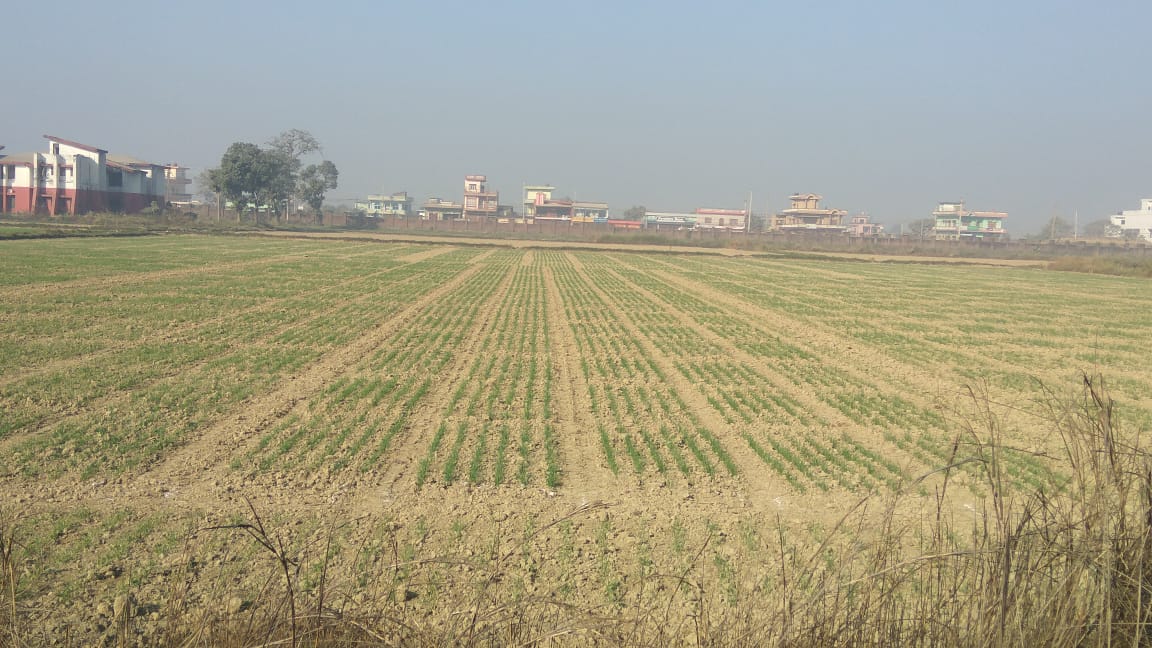Kathmandu: Nepal has formally requested India to supply 300,000 tonnes of the wheat to meet the demand of the flour mills amid India’s ban on wheat exports since May last year.
Even though India in December last year fixed a quota of 50,000 tonnes for supplying wheat to Nepal, Nepal-based flour mills have been seeking supply of more wheat from the southern neighbour.
Flour prices have skyrocketed in the Nepal market and subsequently, the price of biscuits, noodles and breads have also surged in recent months.
“It has been 14-15 days since we sent a request to India for the supply of 300,000 tonnes of wheat meant for Nepal’s flour mills,” Narayan Prasad Regmi, spokesperson at the Ministry of Industry, Commerce and Supplies told India Narrative.com. “The request was sent through the diplomatic channel.”
He said that additional demand for wheat was sought after supply of 50,000 tonnes in the past was not adequate for Nepal’s industrial consumption.
Nepal’s flour mills, whose number are in the range of over three dozen, were pressuring the government for getting supply of additional wheat, complaining that the limited wheat supply from India led either to closure of many factories or less capacity utilisation.
“As per our demands, the government sent the request to India for supply of additional wheat,” Dinesh Kumar Agrawal, senior vice-president of Nepal Flour Mills Association told the India Narrative. “Since India set a quota of 50,000 tonnes for Nepal, Nepal’s flour mills received just 33,000 tonnes of wheat supplied by India and they are forced to run the factories at just 15-20 percent of their capacity.”
He said that his association has called the Nepal’s government to make a request for the supply of 700,000 tonnes of wheat required for the country within a year.
India imposed a ban on wheat exports in May last year after a freak rise in temperatures impacted the harvest there.
In March 2022, a heatwave curtailed India’s wheat production to 100 million tonnes against local consumption of 103.6 million tonnes, according to the reports.
India faced another heatwave in northern and central India earlier this year. The heatwave appearing at a time the crop is ripening is threatening to damage grains and dent the country’s wheat production for the second straight year, the reports said.
And, India is showing no sign of ending the current ban on export of wheat as it wants to keep wheat prices stable in the domestic market amid global supply chain disruption. But many in Nepal argue that India is treaty bound to supply the wheat to Nepal despite it being in the list of export ban.
As per the protocol to trade between Nepal and India which was last renewed in 2016, where needed by one contracting party, the other shall authorise exports of goods which are in export ban category, subject to specific annual quota allocations. The quota list may be jointly reviewed as and when necessary, the protocol to the treaty states.
“In line with the provision of treaty, India had exported rice to Nepal in 2007-08 within a month after India imposed global export ban on rice,” Posh Raj Pandey, executive chairperson of the South Asia Watch on Trade, Economics and Environment (SAWTEE), a Kathmandu-based think tank focussed on international trade, told the Indianarrative.
Nepal also produces wheat. According to Nepal’s Ministry of Agriculture and Livestock Development, annual production of wheat in Nepal has been over two million tonnes in recent years.
In the last fiscal year 2021-22 ending in mid-July 2022, the wheat harvest increased by less than 1 percent to 2.14 million tonnes, according to Nepal’s Agriculture Ministry. “We expect that wheat production will grow to 2.2 million tonnes this year,” Ram Krishna Regmi, under secretary at the ministry, told this website.
Wheat, Nepal’s third largest cereal crop, is sowed in mid-November and harvested in mid-April.
“Nepal’s domestic production is enough for consumption of wheat in its natural form in the households,” said Regmi. “But there is not enough production of durum wheat which are used in certain industries to produce noodles, pasta, breads, biscuits among others.” Durum wheat yields a glutinous flour.
Sunil Kumar Singh, senior agricultural economist at the Department of Agriculture under the Agriculture Ministry said that there have been a few efforts to grow the durum wheat in the country but it has been difficult to convince the farmers.
“The farmers are concerned whether such wheat could be sold in the market provided the flour mills refuse to buy domestic wheat because of cheaper Indian wheat,” he said.
Nepali officials say that the domestic production of wheat is enough for household consumption in its natural form because the majority of Nepali people prefer rice over wheat as staple food.
“People of certain regions and elite communities in the urban areas prefer wheat over rice for their daily food consumption,” Singh, who is also information officer at the Department of Agriculture.
But reduced availability of glutinous flour has resulted in price rise of everything that is produced with durum wheat.
Industries have either increased the prices of the wheat flour-based products or reduced the quantity to adjust the cost of production. “The price of per kg wheat increased to NPR 40 now from NPR 32 at the same time last year,” said Agrawal. “That’s why, it has been difficult for us to keep the price of wheat flour down”
SAWTEE Chairperson Pandey said that the food security situation of the country should not just be judged based just on household consumption of wheat in its natural form.
“Consumption of processed wheat products has also been a rising trend in Nepal’s culinary culture. So, whether the country has enough wheat for the processed wheat products should also be a part of ensuring food security of the country,” he said.
(Prithvi Shrestha writes for India Narrative from his perch in Kathmandu)




















